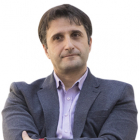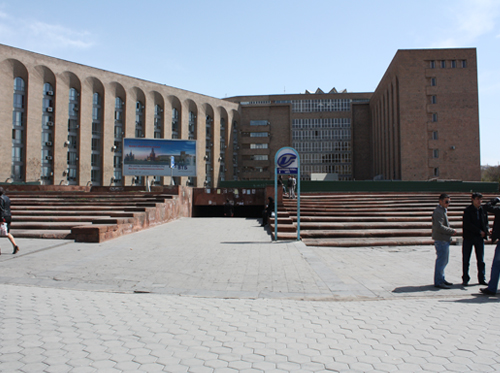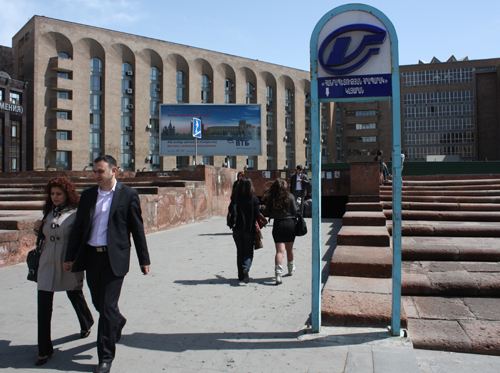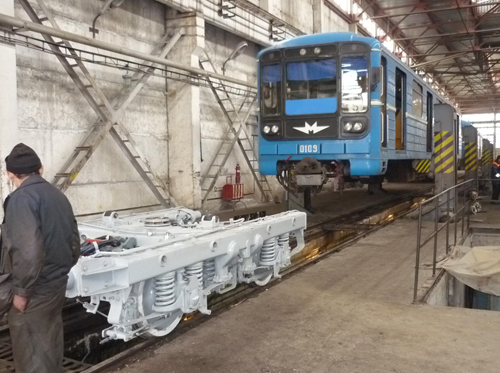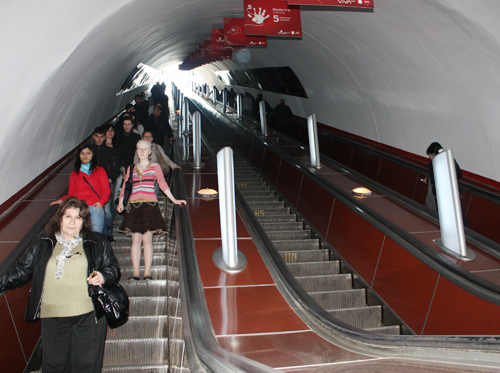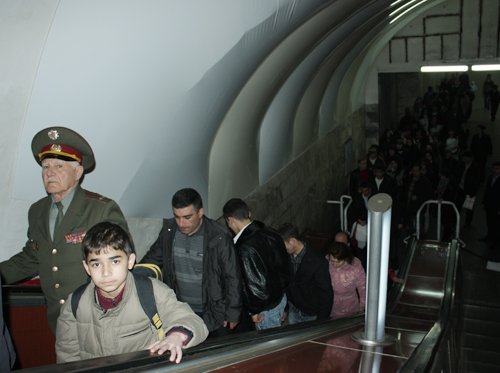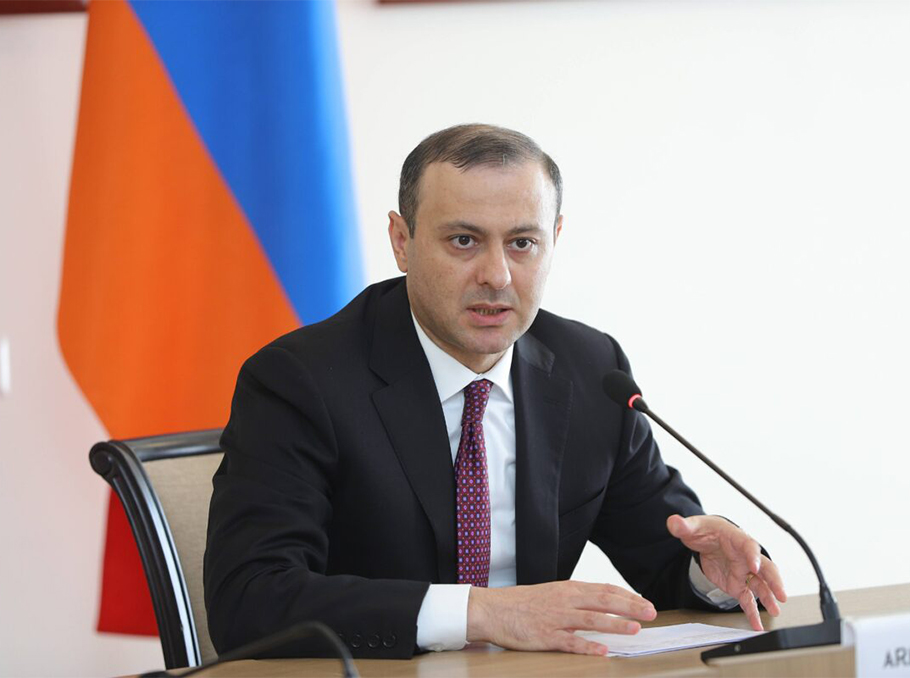For more than 30 years, the Yerevan metro infrastructure has been operational with almost no major capital rehabilitation. With no more than basic ongoing maintenance, the metro saw a significant deterioration of its assets. Thanks to the Yerevan Metro Rehabilitation Project co-financed by the European Bank for Reconstruction and Development (€5 million loan), the European Investment Bank (€5 million loan) and the EU Neighbourhood Investment Facility (€5 million grant) new equipment has been purchased. The overall objective is to upgrade the metro system and to improve the quality of life for Yerevan city residents by encouraging greater use of public transport and reducing vehicle emissions.
“The metro? It brings me where I have to go in 10 minutes instead of 40 minutes by bus,” says Tatevik Sargsyan, who is studying design at an institute located near the Yeritasardakan Metro station, like many other institutes and universities in Yerevan.
Even though the Metro has just 10 stations and is just 12km long, many inhabitants of the Armenian capital, especially students and older people, are often using it. “My friends and I, we prefer the metro system: in the mornings the roads are overcrowded, while the metro is faster, safer and it’s even possible to read something before you reach your station,” says Tatevik.
Asya Kchozyan, a 71-year-old professor teaching chemistry at Agrarian University, uses the metro to get from the suburbs to the centre almost every day. “I have neither the wish nor physical capacity to take minibuses, which are not comfortable and it is always impossible to find a seat there, while in the metro I feel comfortable and safe,” she says. Asya compares different types of urban transport: “Even waiting for the train is comfortable here, compared with the bus stations where the traffic noise and the dust are really annoying. Moreover, the metro system is ecologically clean,” Asya says, believing the underground to be the only comfortable form of transport for the elderly.
Motor transport, a strong (and polluting) competitor
People in Yerevan are attached to their metro system. The main double-tracked line with 9 stations runs from the northwest to the southwest of the city. The second and shorter single tracked branch operates as a shuttle connection, feeding the main line. But for more than 30 years, the Yerevan metro infrastructure has benefited from minor rehabilitation works. Only a basic ongoing maintenance programme was implemented. These limited investments resulted in a certain deterioration of the assets. Now things have started to change.
The Yerevan Metro Rehabilitation project is co-financed by the European Bank for Reconstruction and Development (€5 million loan), the European Investment Bank (€5 million loan) and the EU Neighbourhood Investment Facility (€5 million grant).
Ashot Mnatsakanyan, adviser to the Mayor of Yerevan, describes the metro as the most important link of the city’s transport. “This project,” he says, “addresses safety and energy-saving issues as a first and necessary step towards renovations, with the final goal to make the metro system a way of transport capable of attracting a much higher number of people.”
One of the main reasons why the underground has not been used to its full potential, is the spontaneous development of a parallel and quite extended overground transport network. According to Mnatsakanyan, “many overground transport lines run in parallel with underground lines. We are working now on the possibility of changing the motor transport system. We are also studying the option of creating a unified ticketing system.”
New bogies to make traffic safer and less noisy
“A detailed operational and financial analysis has been carried out to review the project needs, to define a list of investments and finally to develop a procurement and implementation plan”, says Garry Manukyan, adviser to the chairman of the board of directors of the state-owned Karen Demirchyan Yerevan Metro CJSC.
“Priorities for the project were defined on the basis of safety and quality related issues. That is how we came up with a very specific list of items to be purchased, which will also enable us to reduce energy and maintenance costs.” So a traction machine was selected, which operates at nights to repair daily mechanical problems: it replaces a 50-year-old one, which was considered completely worn out. The same criteria was applied to the new bogies, which allow the traffic to be less noisy and safer, to the track components, the cabling, and the water pumping systems. “The delivery of the goods is under way,” continues Manukyan, “and by the end of 2012, the overall project should be successfully implemented”.
“The operation,” he concludes, “will also contribute to the institutional strengthening of the Company in terms of project implementation capacity, operational and financial improvements.”
More people on board, increased revenues for the company
Today, the metro is not running at its full capacity. By encouraging a greater use of underground transport, the project aims not only to benefit the direct users, but also to reduce congestion and pollution from motor vehicles in the city. In a word, the initiative is twofold: improving the quality of life for the citizens of Yerevan by also saving energy and keeping an eye on environment.
“At present, approximately 20 million journeys a year are made on the metro, or 1.3 million people per kilometre of metro line, which is not a high index. An increased use of the metro would also mean increased revenues for the company, which, in combination with predictable subsidies, will lead to operational and financial sustainability”, says Johan Fredholm, Associate Banker at the EBRD on Municipal and Environmental Infrastructure.
According to the EBRD representative, the project fits the bank’s strategy to improve the urban transport infrastructure in Armenia, and the commercialization of services provided by the municipality. “An important component of the project is to develop a Public Service Contract, or PSC, signed between the City and the Metro Company, which will define the rights and obligations of both parties in a transparent way. Historically, there has not been any such contract, because the City is the owner of the Metro company. The Public Service Contract – he concludes - could improve the predictability of budget subsidies”.
Aghavni Harutyunian/ ENPI Information Centre














